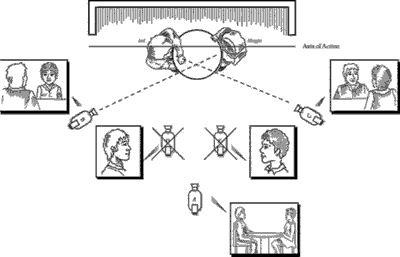The Sci-Fi series Utopia, is based around a mismatched group of people who discover a global conspiracy within a comic book.
The TV show is widely known for it's extreme use in colour. Director Marc Munden uses the Technicolour palette of 1950s Hollywood, in order to replicate the graphic novel's bold aesthetic. Munden says "Normally the way you'd colour a piece of cinematography is by constructing it with greens, blues and reds. The three-strip Technicolour process we use is comprised of the opposite colours-yellows, cyan, magentas"
During post-production, Munden and colourist Aidan Farrell carefully colour-correct each shot in order to give the shot a comic book effect. "We choose certain colours like yellow and turquoise and paint them into shots afterwards. The skies that we shot weren't always blue, they were mostly grey British skies. The same goes for making the grass greener, eyes brighter, or turning a blue van yellow" says Munden.
From this article, posted on wired.co.uk, I have learnt, that during post-production, almost everything can be manipulated into something that it isn't. Post-producton can be used to make something look like it's something almost completely different coloured, and therefore things such as the weather or time of year doesn't effect the production of the filming as it can be edited later on.
In the lead up to filming my opening to a thriller later in the year, I can begin to think about the sorts of things which effect production, and what can be edited/changed during the post-production. For example, I may not have to worry about the fact that when i'm filming it may be blue skies, despite the fact in a thriller, stereo-typically in a thriller the skies would be grey and dull, because we can edit this into the scene, during post-production.
I have found out, that a lot of things which may hold me back when I come to filming, such as the colour of someone's clothes or the type/time of day, can be altered and almost fixed later on in the process, therefore making it easier to get the effect I want.
This image is a perfect representation of the sorts of things which can be done during post-production. This shows us that an image which could be just considered dull and not that interesting, can then be changed into something which has much more depth to it, and the final image will fit the theme of the scene much more appropriately.








